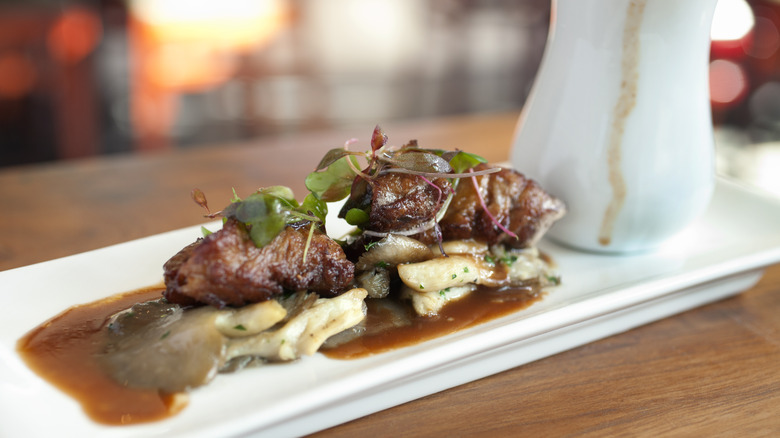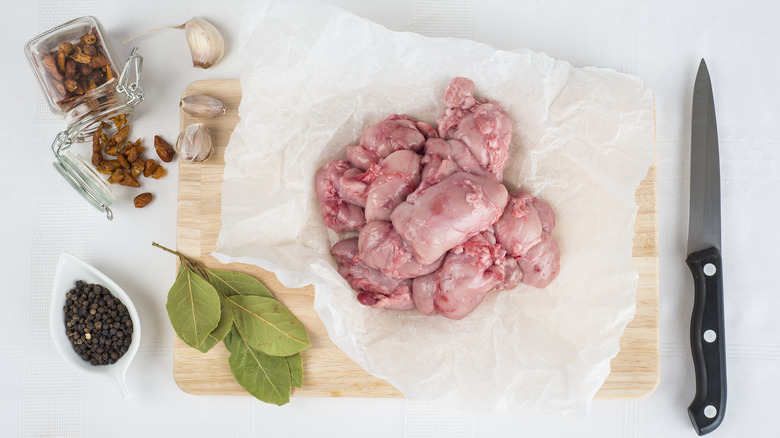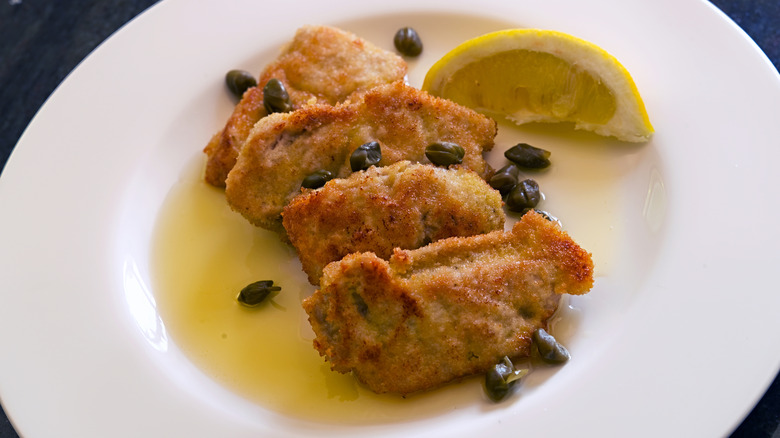You'll Never Suspect What Sweetbreads Actually Are
If you've ever encountered sweetbreads at a restaurant, your first clue that the little-known food isn't what it sounds like was probably the fact that you didn't find it on the dessert menu. It was most likely under the appetizers or main course offerings. Not to be confused with pan dulce, the Mexican treat that translates to "sweet bread," the former is neither sweet, nor is it bread. Sweetbreads are, in fact, the thymus glands or pancreas of young cows or lambs.
They are part of the offal family, or the organs and tidbits of animals that have largely been discarded by American butchers. Most other countries have been utilizing such cuts, which also include things like hearts, livers, kidneys, and tongues, for thousands of years in an effort not to waste a single element from livestock. And, fortunately, offal has become more popular among Westerners in recent years. What makes sweetbreads unique is that they can only be procured from young animals; the thymus glands help newly born mammals fend off illness and disease, and eventually disappear after about six months.
Sweetbreads are largely prized by gourmands and chefs as they are fairly mild in flavor with a pleasant texture, and they pair well with a variety of sauces. They are definitely worth trying if you happen to come across them while dining out, since they aren't very common.
A mysterious moniker
There's no question that the name "sweetbread" itself is misleading; so how did this food that looks like mystery meat get its moniker? While it is certainly not sweet, it could be that sweetbread is much more mild-tasting (therefore, technically sweeter) than other types of offal and traditional cuts of meat. Think of scallops, and how their mild flavor and tender texture is often described as sweet, even though they aren't sugary. "Bread" could have come from the old English word for flesh, which is "bræd."
While their popularity has yet to take off in the United States, sweetbreads are particularly favored in France, where they are known as ris de veau (those from veal) and ris d'agneau (those from lambs). They're also plentiful in Germany, the Middle East, Greece, and Argentina. These little nuggets of goodness will give you a good dose of vitamin C, iron, and magnesium, but they're also on the higher end when it comes to cholesterol. So, although you might fall head-over-heels for them, enjoy sweetbreads in moderation if cholesterol is a concern.
Preparing sweetbreads
For the most part, if you happen to find sweetbreads, it's likely to be in a restaurant. Coming across them in grocery stores is rare; there are only two such organs on an animal, and they tend to be claimed by either butchers in the know or chefs before the casual cook can get their hands on them. Of course, they can also be ordered from some specialty foods websites. If you do get to experience them, there are some necessary steps to take in order to prepare them for cooking.
For the best results, sweetbreads must be soaked in water or milk for anywhere from two to 24 hours in order to remove any residual blood or impurities. It's best if you change the soaking water a few times. Next, they should be blanched and shocked; a quick, three to five minute dip in boiling water followed by a plunge in an ice bath is all it takes. The outside may appear cooked, but the center will still be plenty raw. At this point, you'll need to trim the sweetbreads of excess gristle or fat before you cook them.
Sweetbreads are versatile when it comes to cooking methods. Whether grilled, seared, or fried, they cook up quickly and, like dark meat chicken, are hard to overcook. Their soft, creamy texture is excellent with tangy, sharp accompaniments like lemon sauce, capers, vinegars, and wine-based pan sauces.


